Do you truly believe you understand what jewelry entails? Assume your only experience with jewelry is the bracelets, watches, bangles, necklaces, and rings that you wear on your body. If that is all the knowledge you have about it, you will still struggle to comprehend what jewelry implies as a whole.
Jewelry is more than just ornaments; it is a reflection of our identity, a symbol of love, and a manifestation of people’s individuality. It has a particular place in our hearts and history, from timeless classics to contemporary styles.
The history of jewelry has always been related to those beautiful ornaments that decorate our bodies, which are as fascinating and rich as the objects themselves. It has always maintained a unique place in our hearts, representing love, prestige, culture, and craftsmanship from ancient civilizations to the present.
In a world where fashion trends come and go, jewelry is a timeless accessory that captivates people’s hearts and spirits. It has played a significant role in cultural importance, personal style, and self-expression from ancient civilizations to modern ones.
The uses of jewelry can vary because of the significant differences it can provide for individual fashion styles and cultural orientations. This article will cover all the crucial aspects of jewelry’s function.
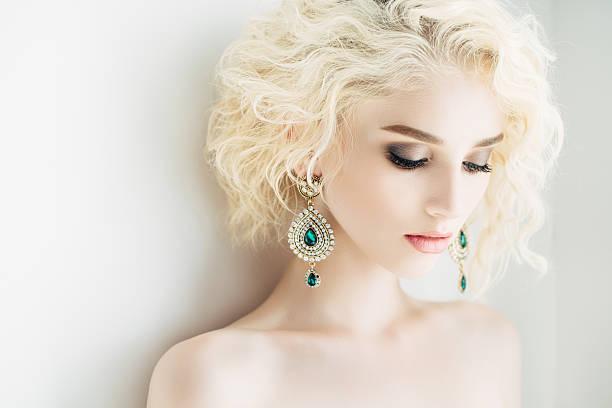
THE HISTORY OF JEWELRY
Jewelry has a rich history that dates back to the use of shells and stones. In the prehistoric period, when it first came into existence, early humans adorned themselves with shells, bones, and other similar items. Jewelry’s history began thousands of years ago, during the peak of ancient civilizations.
Moreover, in ancient Egypt, for example, jewelry held immense cultural and religious importance, with pieces like amulets, bracelets, and necklaces often featuring symbols related to life, death, and divinity. Throughout history, it has also served as a status symbol and a form of personal expression.
Also, from the exquisite goldwork of the Egyptians to the multicolored beads of the Mesopotamians, jewelry was not just a form of decoration but also a symbol of power, spirituality, and identity. These early products were meticulously crafted, demonstrating the incredible creativity and craftsmanship of their designers.
Jewelry has played an important role in every culture and community on Earth at any given point in human history. From the intricate necklaces of ancient Egypt to the deft goldwork of the Byzantine Empire to the momentous wedding rings of today, jewelry weaves an intricate network of storylines.
Jewelry has historically functioned as a symbol of money, power, and social position, in addition to being a tool for conveying sentiments, marking key occasions, and showing love and compassion. It is an essential part of human culture since its beauty is shown not only through its aesthetics but also through the emotions and tales it transmits.
From ancient jewelry to contemporary elegance, jewelry has been a significant part of human culture since ancient times, progressing from simple natural materials to exquisite and intricate pieces of art with deep symbolic meaning and personal significance. These basic decorations were most likely employed for aesthetic purposes, but they might also have spiritual or symbolic significance.
During the Renaissance period, there was a boom in the passion for the arts and sciences, which had a significant effect on jewelry design. Jewelry changed in response to the evolution of social and cultural standards during the twentieth century.
THE IMPORTANCE AND USEFULNESS OF JEWELRY
In terms of historical significance as well as modern use as a way to adorn our bodies and the statement’s components, jewelry is highly important. The following specifics will be covered in more depth below:
It Serves As Cultural Significance
The role of jewelry in conveying culture is long-lasting and cross-cultural. People have used it to express status, beliefs, and social position throughout history. It embodies the essence of various cultures, from the grandiose necklaces of ancient Egypt to the dainty anklets of Indian traditions.
These ornaments are more than simply ornamental trinkets; they are historical artifacts that tell the stories of previous times. It serves as a form of self-expression by allowing people to show off their individuality and sense of style.
Because the materials, designs, and techniques used in jewelry-making typically include significant cultural meanings and traditions, each piece is a unique representation of the aesthetics and values of the civilization in which it was produced.
Self-Expression and Personal Statement
The traditional role of jewelry has shifted in modern times. It has turned into a tool for us to show our individuality and make a statement. Whether you select a minimalist silver bracelet, a big diamond ring, or a delicate pearl necklace, your choice says a lot about your personality and sense of style. It allows us to express our hobbies and preferences.
It enables us to stand out from the crowd and transmit our individuality to the outside world without speaking a single word. There is jewelry for every mood, event, and personality, which is the beauty of this art form: from elegant and refined to daring and modernist design. It is more than just a fashion accessory; it is a means of expressing oneself.
People may communicate their personalities, ideals, and sentiments via the jewelry they wear without saying a single word. Whether you pick dazzling gemstones, gorgeous pearls, or plain metals, your jewelry says a lot about your personality.
The Symbol of Love and Marriage
Jewelry has a strong emotional influence, especially in relationships, in addition to its aesthetic worth. Family heirlooms symbolize the history of preceding generations, whereas engagement rings signify the lifetime connection between couples. Because of its unequaled ability to evoke good memories and improve ties with loved ones, it is a treasure chest of emotions.
However, it is one of the few gifts that evokes such passion and devotion. Whether it’s a magnificent diamond engagement ring, an emotive birthstone pendant, or a classic pair of pearl earrings, giving someone jewelry is a unique way to express your love and care for them. Giving it has a unique way of leaving a permanent imprint on us.
It becomes a treasured remembrance, reminding us of the connection we have with the one who gave it to us. In addition to monetary worth, it is critical to evaluate the thought, emotion, and love that go into anything.
Boosting Confidence and Empowerment
Wearing the correct jewelry may make people feel more confident and empowered. It functions as a silent source of strength when worn before a critical presentation or as a fortunate charm for a particular event. This surge in confidence has the potential to alter people, providing them with the energy to meet obstacles head-on.
One of the most impressive aspects of jewelry is its capacity to change the appearance of an outfit. When getting ready for a formal event or adding a touch of refinement to your ensemble, the proper jewelry may make all the difference.
While a spectacular necklace may transform an average dress into a stunning combination, a great pair of earrings can frame your face and draw attention to your beauty. It is a strong item that allows you to experiment with style and emphasize your sense of style, from bracelets that jingle with every movement to eye-catching rings.
Jewelry As An Investment
Jewelry may be a smart investment as well as being aesthetically appealing. Certain jewelry products are more than just decorations since precious metals and gemstones typically rise in value over time. While fashion trends come and go, the timeless appeal of fine jewelry never fades, making it an appealing option for consumers looking to diversify their holdings.
Because it is a tangible property that can be passed down through generations, investing in it may provide a sense of security and stability. Furthermore, the rarity and uniqueness of some things can increase their value even further, piquing the curiosity of collectors and enthusiasts alike. Jewelry investments may provide income in addition to basic buying and selling.
Some investors prefer to lease their precious objects to museums or galleries to profit from exhibition fees or leasing agreements. Furthermore, the sentimental worth and emotional value associated with it may offer investors a sense of contentment as they appreciate both the potential financial returns and the excellent design and craftsmanship of their purchases.
The Art of Craftsmanship In Memory
Every piece of jewelry contains a memory—a split-second in time. Jewelry, whether a pendant, bracelet, or necklace, is widely used to remember significant life milestones such as graduation, anniversaries, or birthdays. These beloved possessions serve as concrete reminders of one’s achievements, joys, and travels.
Each exquisite piece of it is inspired by the skills and dedication of talented craftspeople. From the initial idea sketches to the meticulous workmanship, jewelry-making is a true art form that requires skill, inspiration, and a complete understanding of materials. Jewelry designers and craftspeople convert raw materials into exquisite works of art.
They carefully choose the metals, diamonds, and other components to produce a piece that is nothing short of faultless. Each item is unique since it is made with love and creativity.
Sustainability and Ethical Considerations
In terms of sustainability and ethical behavior, the jewelry industry has lately made strides. Jewelry companies that prioritize ethically sourced materials and environmentally sustainable manufacturing methods are gaining popularity.
By associating it with ethical consumer principles, this shift in consumer behavior not only benefits the environment but also boosts its value. Environmental sustainability and ethical values can help jewelry producers stand out in a crowded market and attract a growing group of socially concerned buyers.
Furthermore, when designers are pushed to devise novel ways to incorporate environmentally friendly materials and techniques into their designs, the emphasis on ethical behavior may foster innovation and creativity within the industry.
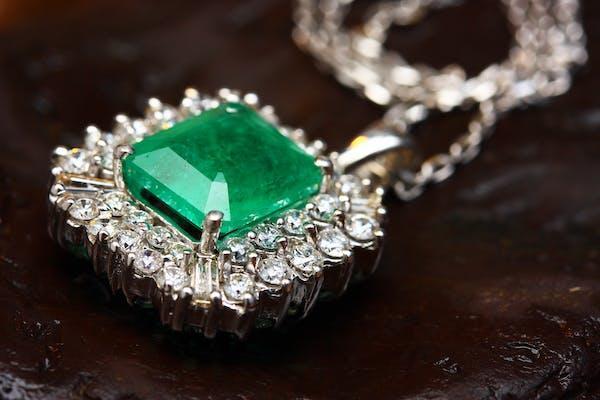
HOW TO STORE AND MAINTAIN YOUR JEWELRY
Jewelry is more than just a fashion statement; it often has sentimental significance and represents your style and personality. Each piece, whether made of valuable diamonds or precious metals, has its own story. Proper maintenance and care are required to ensure that your jewelry continues to shine and last. We will provide professional advice on how to keep your jewelry in the best possible condition.
Basic Cleaning and Storing Tips for Your Jewelry
Composition of Your Jewelry
Jewelry comes in a variety of shapes and requires distinct kinds of care. Learn what each component requires in terms of specific cleaning and care. Knowing the components of your jewelry, the gemstones it includes, and any special characteristics it may have is part of this.
When compared to tougher gemstones like diamonds or sapphires, delicate gems like pearls or opals may require softer cleaning processes. Aside from that, some metals, such as gold or silver, can tarnish with time and require special cleaning processes to restore their shine.
Knowing what materials your jewelry is made of allows you to ensure that you are providing it with the proper care to keep it looking wonderful for years to come.
Regular Cleaning
Cleaning your jewelry regularly helps keep the shine from being dulled by grease, grime, and other impurities. Dust and dirt should be carefully removed using a soft, lint-free cloth. Warm water and a few drops of dish soap can be used to make a mild soapy solution for deeper cleaning.
Use a soft brush to gently clean it, being sure to get into all the gaps. After that, rinse and pat it dry to get rid of any soap residue that may have remained. The use of abrasive or strong chemicals should be avoided since they might harm the delicate surfaces of your jewelry.
Additionally, think about having it regularly deep cleaned and inspected by a competent jeweler to make sure that any loose stones or broken components are fixed right away.
Gemstone Care
Gemstones must be handled with extreme care. The sensitivity of a stone to chemicals or sudden temperature changes might vary. A gemstone collection should always be cared for according to the manufacturer’s instructions.
In general, using a soft cloth and a delicate touch is the best approach to keeping your gemstone jewelry gleaming. Stones most typically detach from metals over time due to wear and tear. The prongs or settings that hold the gemstones in place must be examined regularly and adjusted as needed.
Separating your gemstone jewelry from other pieces and placing it in a soft pouch or box will also help prevent scratching or damage from other jewelry.
Avoid Exposure
Strong chemicals, such as those found in cosmetics and household cleansers, can destroy it. Remove your jewelry before applying lotions, scents, or anything else that might expose it to chemicals.
Remember to remove it before swimming or if it begins to rain, since chlorine and saltwater may be very destructive to many types of jewelry. It is also important to keep your jewelry in a cool, dry place to minimize tarnishing or discoloration.
If you keep it out of direct sunlight or particularly hot or cold situations, it will be easier to maintain its quality and beauty over time.
Storage
Scratches, tangles, and other types of damage may be prevented with appropriate storage. To keep each piece separate, use discrete jewelry bags or jewelry boxes with soft linings. Keep your jewelry out of drawers where it might become entangled with or damaged by other things. Consider adding silica gel packets or anti-tarnish strips to your storage containers to protect your jewelry from moisture.
By taking these extra precautions, you can extend the life of your valuable objects and keep them looking lovely for many years to come. Jewelry is frequently stolen because of its high value and small size. Investing in a secure safe or lockbox designed specifically for storing pricey valuables may help further protect your gems from theft.
In case of loss or damage, it is also a good idea to preserve a record of your jewelry, complete with images and appraisals. You may rest easy knowing that your priceless items are both safeguarded and readily accounted for by taking these extra precautions.
Periodic Maintenance Of the Brilliance
Check your jewelry regularly for signs of wear, loose stones, and other issues. By detecting and addressing these issues, you may prevent them from worsening and costing you additional money to solve. At least once a year, have it professionally cleaned by a jeweler. They may fully clean the product and restore its brightness after inspecting it for any hidden issues.
Some activities, such as sports or heavy lifting, might put a strain on it. Remove your jewelry before performing such activities to avoid inadvertent damage. Regardless of how much you like admiring your jewelry, repeated touching can transfer oils and filth from your skin, decreasing the brightness of the piece over time.
If you must handle your jewelry, do it by the edges or with a clean pair of gloves. Some jewelry, especially those made of precious metals, may benefit from occasional polishing. Avoid going beyond that, though, since excessive polishing may cause the metal’s outer layer to vanish.
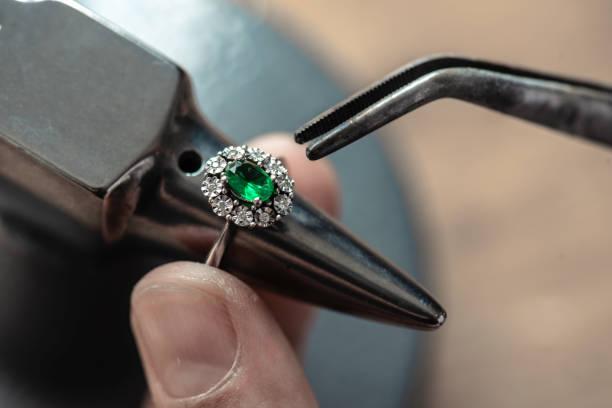
TYPES OF JEWELRY
The designs, components, and forms of jewelry are as varied as the people who wear them. Let us explore the fascinating world of jewelry, its various variations, and the stories that each item conveys.
Necklaces and Pendants
A necklace or pendant is one of the most versatile pieces of jewelry. They are available in a range of forms, ranging from delicate chains with modest pendants to opulent pieces encrusted in diamonds. Pendants can incorporate pictures, precious stones, initials, and other elements that convey the wearer’s personality and worldview.
Necklaces and pendants can also be worn in a variety of circumstances, ranging from casual daily wear to formal events. Choker, princess, and opera-length necklaces are just a few of the various necklace length and style options. Each necklace or pendant tells a unique story and adds a personal touch to any ensemble.
Earrings
Earrings in studs, hoops, chandeliers, and dangles embellish the ears. Earrings have the power to draw attention to facial features and improve a wide range of outfits, from basic elegance to spectacular assertions.
Earrings can quickly boost any outfit, whether you desire small studs for a delicate touch or huge chandeliers for a stunning effect. They are versatile accessories for every circumstance since they not only enhance facial features but also allow for self-expression and creativity.
Waist Chains And Waist Beads
Waist chains and waist beads are two more forms of jewelry used by women all over the world. This is common among Arab and Indian females for body ornamentation and dancing. Waist chains are widely worn around the waist and are made of a range of materials, such as gold, silver, or beads.
They enhance the wearer’s curves and give their look a unique flair, while also adding a touch of elegance and sparkle to any ensemble. People can express themselves or engage in cultural practices by wearing waist chains and waist beads.
Bracelets and Bangles
Bracelets and bangles ring the wrist, and the fashions of these ornaments are as varied as the countries from which they originate. Wrist jewelry is available in a range of forms, ranging from delicate chains to robust cuffs, engraved bangles to intricate charm bracelets.
They can be worn for fashion, to express love or friendship, or both. Bracelets and bangles may also be stacked or layered to create a one-of-a-kind and diversified design that shows the wearer’s style and personality.
Rings
Rings are special in the jewelry market since they represent devotion, achievement, and intimate connections. Engagement rings, wedding bands, signet rings, and statement rings come in a variety of forms, and many of them include valuable jewels, birthstones, or intricate metalwork.
Because they are worn on the fingers, they may be an excellent way to express one’s uniqueness and sense of style. Rings can also be passed down through the generations, storing memories and family information.
Brooches and Pins
Brooches and pins, for example, can be pinned to clothing, headgear, or bags. They are typically crafted with complex designs and can be a representation of a person’s likes, fashion, or even historical eras.
Brooches and pins have grown in popularity throughout history, with several cultures and historical periods displaying their distinctive styles. They are versatile accessories for both formal and informal settings since they can be used to lend a touch of elegance or whimsy to any look.
Anklets
Ankle bracelets, also known as anklets, are bands that wrap around the ankle and are commonly used with summer clothing and beachwear. They might be simple chains or ones embellished with charms, beads, and valuable stones. It is often worn on the legs and can be worn on either one or both ankles.
Anklets may be traced back to ancient cultures such as Egypt and India, where they were worn as status and beauty symbols. Anklets are a trendy accessory that adds a vintage or whimsical touch to any outfit.
Body Jewelry
Body jewelry refers to a wide range of items, such as nose rings, belly button rings, and eyebrow rings. These items are widely used to express one’s personality and have cultural and personal significance. Some people go even further and wear it by piercing their upper lip.
Another piece of it for the teeth serves as a religious emblem. It is typically made of valuable metals and set with diamonds. Singers and celebrities have made tooth jewelry a hot fashion statement to increase its beauty and appeal.
Watches
Watches are both functional timepieces and elegant embellishments. They come in a range of forms, from traditional leather-strapped watches to cutting-edge smartwatches, and are a blend of style and practicality. This has to be one of the most expensive and sought-after accessories ever.
Rolex, Patek Philippe, and Jacob & Co. are just a few examples of luxury watch brands that are highly sought after by collectors and enthusiasts alike owing to their superior craftsmanship and attention to detail.
Furthermore, watches are now worn as statement pieces to demonstrate one’s taste and sophistication and have grown into a sign of prestige and achievement.
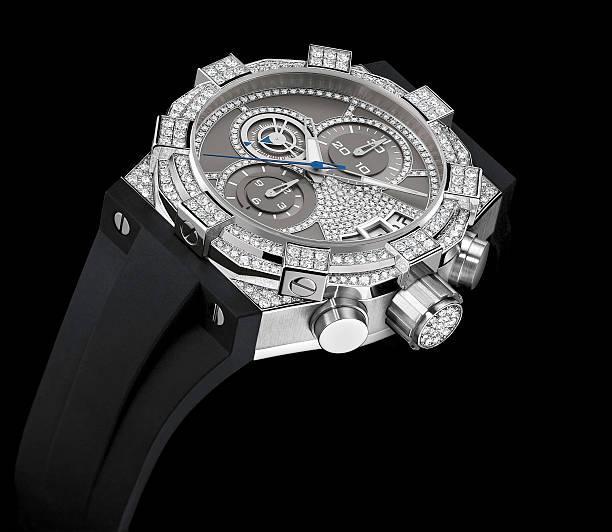
JEWELRY FOR CHARMS AND AMULETS
In the realm of jewelry, where elegance and significance merge, charm and amulet jewelry are captivating products that go beyond basic aesthetics. These intricate decorations can be used to beautify the body while also providing protection and good luck, according to the wearer’s choices. Charm and amulet jewelry have cultural significance and may even provide supernatural protection.
The Hereditary Allure
Hereditary appeal Charms and amulets are ageless pieces of it. Animals, hearts, and religious symbolism are typically included in the wearer’s intricate designs. They become valued relics that are passed down through families as heirlooms by adding a personal touch and capturing the spirit of relationships and recollections. They generally wear family crests that represent the spiritual significance of the family.
Cultural Significance and Symbolism
Charm and amulet jewelry have been embraced by several civilizations across the world as symbols of history and significance. Charms were worn to ward off evil spirits in medieval Europe, while amulets were supposed to give protection and riches in ancient Egypt.
It is used in both ancient and modern Africa for protection and good luck. People use charms and amulets as personal talismans because they provide comfort, protection, and good fortune.
The Power of Protection
Aside from their aesthetic and symbolic appeal, charm and amulet jewelry usually carry connotations of protection. In various cultures, some symbols are regarded as having protective characteristics that can protect the wearer from bad luck or negative forces.
For example, the Four-Leaf Clover charm is associated with good luck in Western countries, yet Middle Eastern societies respect the Hamsa sign for its protective abilities. Charm and amulet jewelry are popular travel companions because of the popular belief that they have protective abilities, which adds an extra layer of importance.
Elegance, Tradition, and Spiritual Power in One
Looking at their comparable aesthetic aspects, it may be difficult to discern between spiritual jewelry and normal jewelry. Because of the plethora of internet platforms and jewelry stores that offer a range of options for those seeking them, these classic gems remain alluring and significant in our digital age.
Charm and amulet jewelry will continue to amaze future generations because of their ideal blend of historical and modern elements. These multi-purpose charms and armlets can be found in a variety of physical and online stores.
HOW TO RATE AND VALUE JEWELRY
Jewelry has been a treasured part of human history for centuries, with its gleaming allure and intricate craftsmanship. From elegant necklaces to sparkling gemstones, the world of jewelry is a fascinating realm that combines artistry, history, and economics. We will be shedding light on the factors that contribute to its pricing and desirability.
The Essential Four Cs of Gemstones
The four Cs—Carat, Cut, Color, and Clarity—are important factors in establishing the value of jewelry, particularly pieces set with gemstones. These elements determine the quality and value of a gemstone, whether it be a diamond, sapphire, emerald, or ruby.
Carat
The term “carat weight” refers to the gemstone’s size. Larger gemstones are often rare and, as a result, command higher prices. The other Cs, on the other hand, interact with carat weight, which is not the main determinant of value.
The carat weight of a gemstone can also impact its strength and wearability, since larger stones may be more prone to breaking or require specific settings to ensure their longevity.
Cut
The cut of a gemstone affects its brilliance and glitter. A beautiful gemstone will reflect light in a way that accentuates its beauty. The correctness of the cut, facets, and proportions add to the overall beauty of the stone.
The cut of a gemstone can also affect its apparent size. A well-cut gemstone may appear larger than its genuine carat weight, adding to its aesthetic value. Furthermore, a gemstone’s ability to show fire and scintillation is determined by how well it interacts with light, which is controlled by the cut.
Color
Gemstones are available in a broad range of colors, and the potency and purity of these colors have a considerable influence on their value. For example, color grades in diamonds vary from D (colorless) to Z (light yellow or brown), with D being the most expensive.
Any visible color in a diamond can significantly reduce its value. Furthermore, some gemstones, such as sapphires and emeralds, are valued for their brilliant and saturated colors, making them more costly than those with lighter or less intense colors.
Clarity
When evaluating a gemstone’s clarity, experts look for any inclusions or defects that may be internal or external. The clarity grade and, hence, value correlate negatively with the number of these flaws. Since they have fewer flaws that might diminish their overall appeal and brightness, gemstones that have higher clarity ratings are valued higher.
The flow of light through a gemstone can be impeded by inclusions or flaws, which reduce the brilliance and market value of the gemstone. Considering the great demand from enthusiasts and collectors, diamonds with excellent clarity fetch higher prices in the market.
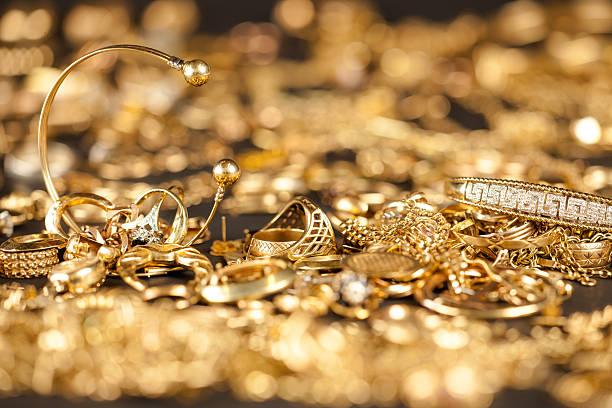
Metals and Materials Aesthetic Worth in Jewelry
The metals and materials used to create the jewelry are equally as essential as the gemstones themselves. Precious metals such as gold, silver, and platinum are popular choices due to their rarity and durability, as well as their high monetary value.
The karats (a unit of purity) of certain metals influence their worth. These materials are typically utilized to give it a clean, modern appearance. Metal items are extremely valued owing to their cultural and historical relevance, as previously stated.
They have been used for millennia to create intricate, magnificent works of art that are sentimental treasures and symbolize position and money.
CONCLUSION
Your jewelry is a wonderful financial and emotional investment. Remember that excellent care, frequent cleaning, and periodic expert assessments are the keys to keeping it in pristine condition. Because of its emotional impact, historical significance, and artistic value, jewelry plays an important part in our lives.
Jewelry may help you achieve these aims, whether you want to show your individuality, commemorate a special occasion, or just improve your aesthetic. It has always been a sign of self-expression, love, empowerment, and remembrance, whether in the intricate patterns of the past or the cutting-edge masterpieces of the present.
As I dig deeper into your website’s information base, I’m amazed at how much you have to offer. We look forward to a future full of more success and new ideas.
Thank you very much. You will definitely find more educational topics and new ideas in the future. That is why we always take our time to find a good niche and compose good articles for our viewers. Once again, thank you for visiting our site.